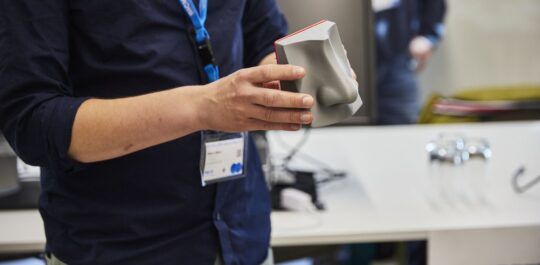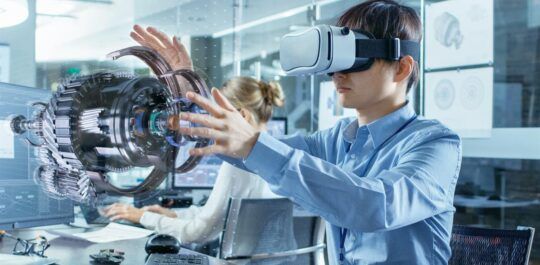Supermarkets and Stores
Quality Control: An AI nose can be used to ensure the freshness and quality of food products in supermarkets. It can detect odors that indicate spoilage or contamination, allowing supermarket staff to remove the affected products from the shelves and prevent them from being sold to customers.
Inventory Management and Food Waste Prevention: An AI nose can be used to monitor the inventory levels of fresh produce in supermarkets. It can detect the ripeness of fruits and vegetables and alert supermarket staff when they are reaching the end of their shelf life, allowing them to be sold or used before they go bad.
Customer Experience: A more pleasant shopping experience for customers can be created by detecting and neutralizing unpleasant odors in the store. Custom scents that enhance the shopping experience and create a welcoming atmosphere can also be created.
Agriculture
Quality Control: Quality and freshness of crops during harvesting and storage can be controlled more closely. Detection of specific odors released by crops when they are ripe or beginning to spoil can allow farmers to harvest or sell them at the optimal time.
Livestock Management: An AI nose can be used to monitor the health and wellbeing of livestock by detecting specific odors associated with disease or stress. This can help farmers identify and treat sick animals before the disease spreads.
Food Production
Quality Control: The quality and safety of food products during production can be better ensured through the detection of specific odors released by food products when they are beginning to spoil or are contaminated.
Process Optimization: Inefficiencies or potential quality issues can be identified early on through the analysis of odors, allowing food production staff to make adjustments and improve and optimize the overall process.
Furniture Industry
Quality Control: Unearthing specific odors released by materials or chemicals, e.g. formaldehyde vapors, during production can allow furniture production staff to take action to prevent any safety issues or defects.
Fragrance Developers and Manufacturers
Consumer Testing: An AI nose could be used to test fragrances on consumers by analyzing the specific odors associated with different fragrances. This can help fragrance developers identify the scents that are most appealing to consumers or help in the development of personalized perfumes for individual customers.
Integration Into the Process World
Success also depends on connecting the platform to the production IT and ERP systems in order to trigger follow-up processes and ensure continuity in the process. This ensures that action is always taken when the nose sends back a notification on what it has sniffed out – whether that means adding salt to a soup, lowering the temperature or calling a human.
The IoT and AI can transform a business in many ways , but underpinning any efficient application is a solid logistics and management infrastructure.
Although “artificial noses” already exist, they are veritable specialists. From talking to various sensor manufacturers and scientists, we have established that you can develop dedicated sensors if you know which molecule or aroma you are looking for. However, it is not possible to pack thousands of different sensors into an artificial nose in order to pick up a wide spectrum of olfactory impressions.
We are now looking for new exciting use cases for a scalable smell detection.
Cover image: ©Andreas Kusy Photography










